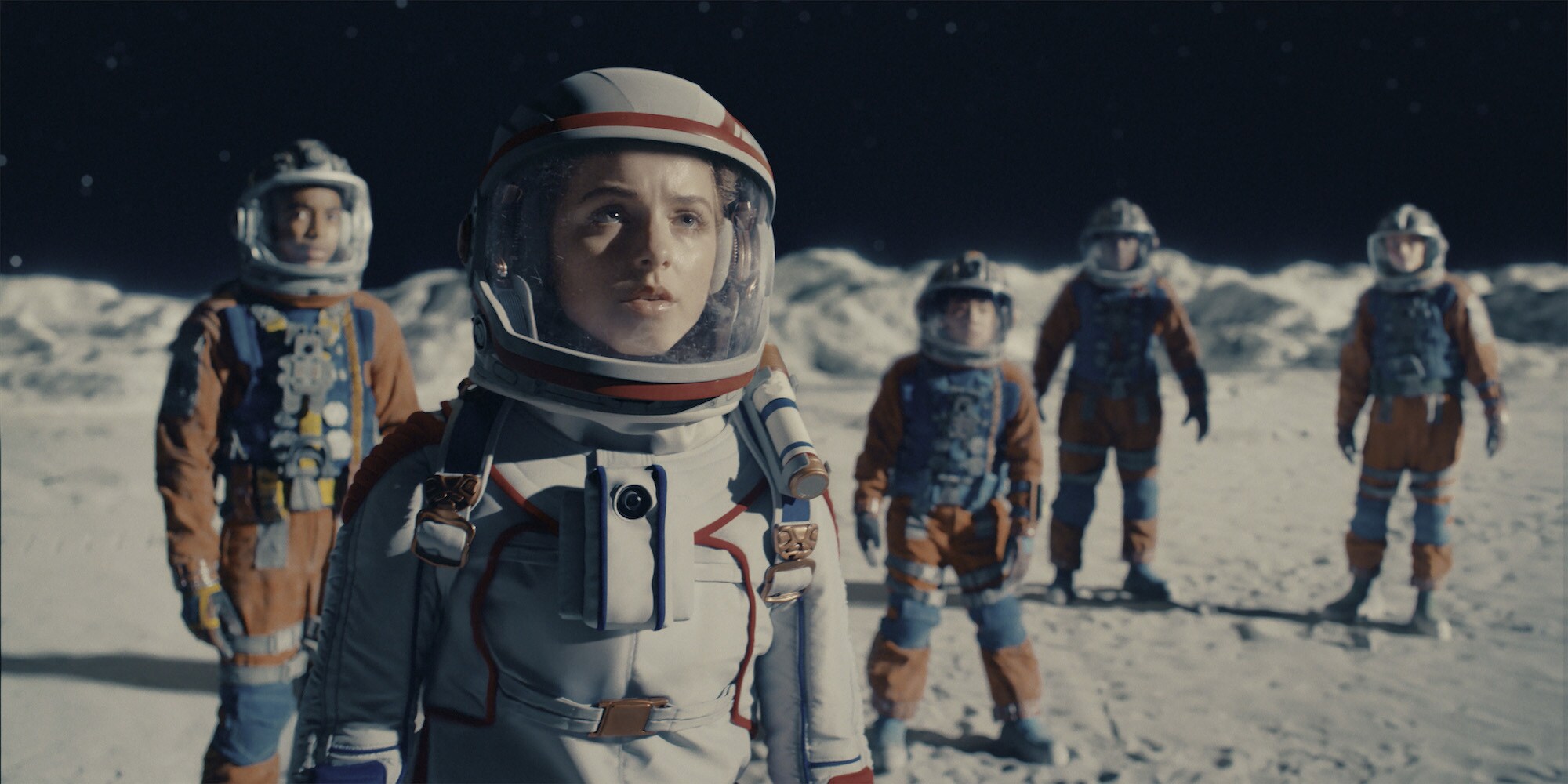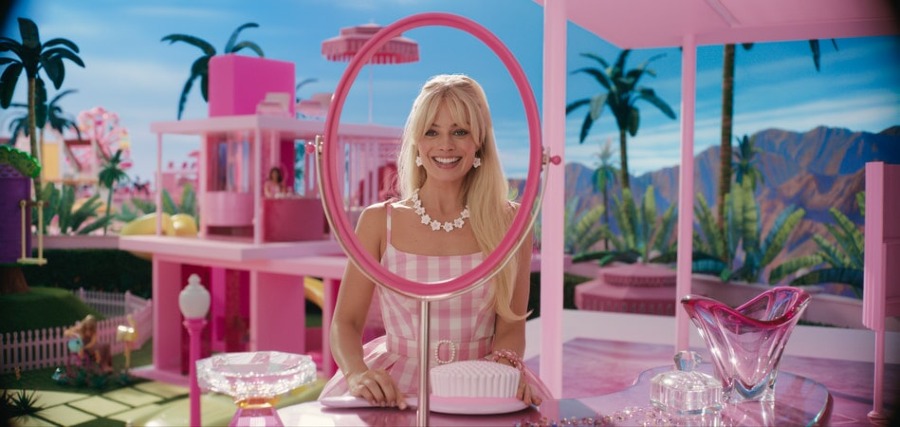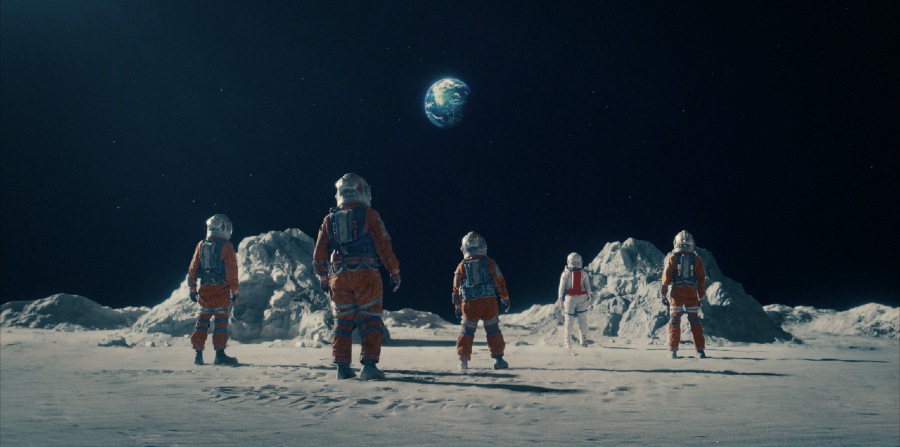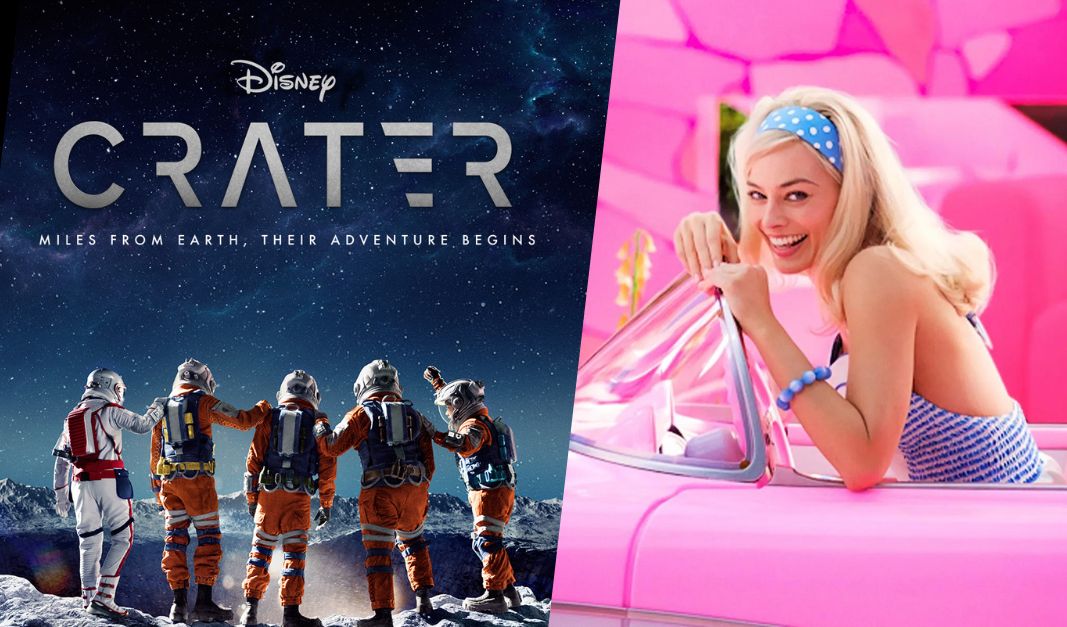The boy walks the cobblestone with a pony cart hitched to his back. Coal is smudged on his face. He wears a little newsboy cap.
The year is 2023.
“Herrah, herrah! Get ya movie tickets here!”
The cart is filled with movie tickets, blowing about in the wind. People rush forth and the kid recites his spiel:
“Ryan Gosling! Margot Robbie! Will Ferrell! Directed by Greta Gerwig…”
This is the theatrical trailer.
Fortunately, this is not what movie marketing looks like in 2023: no cobblestoned OSHA child labor violations. What movie marketing does look like is diverse and constantly evolving as platforms and studios strategize how best to reach their audience.
Two 2023 projects serve as quality contrasting examples of movie marketing campaigns: Disney+’s upcoming made-for-streaming premiere of Crater, and Greta Gerwig’s live-action theatrical release of Barbie.
One of them went short, fast, guerrilla-style – like dumping a pile of hot dogs on the grill and rolling them over high heat. The other went slow-burn, the long game of repetitive messaging – an all-day smoked pork butt letting its scent be carried aloft on the wind for the entire neighborhood to inhale.
This is an observational contrast – call it a case study – of two diverse marketing strategies that carry a common baseline:
Nostalgia.
Disney+’s Crater: one grilled movie hotdog among a Disney Original pack of five

Photo credit: Disney+
Crater has one of those development histories where it feels like the film ran a 4×1 relay race before it made it to the final stages of production.
John J. Griffin’s spec script occupied the 2015 Black List. 20th Century Fox bought the rights, the directors changed, Disney+ acquired 20th Century Fox, the project was scrapped, and then Crater moved to Disney+’s streaming service to be directed by Kyle Patrick Alvarez. In March 2021, Variety reported the primary ensemble cast. Local outlets in Louisiana announced in May and June 2021 that the movie was ready to shoot, and gave it a vague but notable public aura as the “$40 million space movie”.
And then…crickets.
For two years, no publicity. The movie wrapped in August 2021. Little was released in 2022. March 29th, 2023, they set the Crater spaceship to “initial thrust” and released a “First look” on Instagram along with an official press release. Then in April 2023, exactly one month before its streaming release date, Disney+ released an official trailer.
No cast interviews, no teasers, and no cascading waterfall of publicity on a film with an estimated budget of $53.4 million. – what’s the approach here? We will theorize it like this:
Crater is one critical Jenga piece in a structure of oncoming Disney Original Films.
Between March 30th and May 24th, 2023, Disney+ is releasing or has released five(!) original films. According to TV Insider, these Originals are Prom Pact (March 30th), The Crossover (April 5th), Peter Pan & Wendy (April 28th), Crater (May 12th), and American Born Chinese (May 24th). Now, look at Disney+’s social media, and no one project is dominating its publicity presence. Even Peter Pan & Wendy, which was released last week, has been posted about once in that time on Disney+’s Instagram.
The strategy here appears to be to release several original films in a quick cadence and then push them all at once in a rotating fashion. It’s moderation versus a waterfall of content toward any individual film. All of these films need to earn their budgets back in subscription dollars, and to do so, Disney+ needs a deep – and long-lasting – well of unique, memorable films that will build momentum throughout 2023 and carry on.
The day the official Crater trailer was released, Comicbook.com reported on an investor call between Disney CEO Bob Iger and investors. Iger said:
Now it’s time for another transformation, Iger told the press and shareholders. One that rationalizes our enviable streaming business and puts it on a path to sustainable growth and profitability, while also reducing expenses to improve margins, and better positioning us to weather future disruption increased competition, and global economic challenges. We must also return creativity to the center of the company, increased accountability, improved results and ensure the quality of our content and experiences.
The Disney+ model going forward is based on a field of Originals that utilizes a short-term, quick-hitting buildup:
- Press release for “first looks” just four or five weeks out
- Official trailer release
- Rotating social media content escalating up to premiere
American Born Chinese is the latest affirmation of this strategy – the movie releases on May 24th and the official trailer was released just last week on April 21st.
It seems like the recipe is this:
Dump five hot dogs on the grill. Roll them over high heat one at a time for a month, and then move them off to the side to slowly sweat and simmer all year until a family is ready to binge one on a weekend movie night.
No matter how long they sit, everybody loves a grilled hot dog.
Warner Bros. Pictures’ Barbie: a slow-smoked pork butt

Photo credit: Warner Bros
It feels like Barbie has been in the public consciousness forever, and it still won’t be released theatrically until July 21st. That’s why it makes for a great contrast: Crater was a picnic hotdog, and Barbie is your all-day pork butt.
At first impression, you might want to aggressively pose a counterargument. Barbie is hyper-colorful, its marketing has been explosive and vibrant, and it has utilized a variety of approaches, from a viral selfie generator campaign to on-set pics of Ryan Gosling as Ken.
Why it’s a slow-smoked pork butt is this:
All of these in-your-face marketing approaches, they’ve been simmering for about 13 months. The first image of Margot Robbie as Barbie was shown at CinemaCon in April of 2022. The Warner Bros. Youtube channel released its first teaser trailer in December 2022. A “Barbiethemovie” Twitter account started sparking off tweets the first week of April, and a second trailer followed that has since accrued 20 million views.
Conor Murray of Forbes Magazine put it like this on April 5th:
Months of social media hype came to a head on Tuesday when cast posters and a vibrant trailer for director Greta Gerwig’s new film were finally unveiled—sending social media into a frenzy and building hopes that Barbie owner Mattel can reinvigorate a 64-year-old brand.
The Barbie selfie-generator is an AI tool that allows anyone to plug in a picture of themself and instantly become Ken or Barbie. It went viral and was basically like Warner Bros. applying another coating of sauce to the pork butt. That’s what Warner Bros., Mattel Films, HeyDay Films, and LuckyChap Entertainment have continued to do throughout the campaign: a steady, consistent lathering that doesn’t let up until the premiere.
This ongoing spotlight has manifested in manufactured sound bytes, like when The Hollywood Reporter published an article about Ryan Gosling doubting his “Ken-ergy”. They’ve also utilized a staggered approach for news, such as drizzling out different members of the cast over a matter of weeks instead of all at once.
You could argue it’s not fair to compare Crater to Barbie – one has a cast full of A-list star power and a brand that debuted in 1959. But here’s where Crater and Barbie’s marketing campaigns merge:
They’re both based on nostalgia.

Photo credit: Disney+
In the “first look” summaries provided by Disney, Crater was described as a “coming-of-age Sci-fi adventure”. This point was imprinted heavily and Disney utilized this framing in its press releases. 21 Laps Entertainment, one of the production companies on Crater, said in a March 31st, 2023 Instagram post:
“It started off with a simple idea: STAND BY ME on the moon. It’s now a movie your whole family will love.”
The significance of name-dropping Stand by Me all over the place is that Stand by Me is a 1986 coming-of-age adventure drama absolutely drenched in nostalgia. And while it seems like Crater had to manufacture its positioning as a nostalgia film, it already had the nostalgia support structure. Between 1998 and 2006, Disney was pumping out six to 12 original films per year. In the year 2000, Disney released 12 original films. 12! Between 2012 and 2023, Disney released no more than four originals in a year. Disney strayed from its creative roots and is returning to them, giving today’s adolescents the 2023 versions of Rip Girls and Johnny Tsunami.
Barbie, while operating with a bombastic shiny surface of viral fun, comes from this same multi-generational place of nostalgia. Late Boomer or Gen X Barbie fans think of playing with the dolls, and millennial Barbie fans think of Y2K fashion, which has now come full-circle into a 2023 resurgence as “Barbiecore”. The “Barbiecore” trend on Tik Tok currently sits at 619.2 million views.
The nostalgia factor is so apparent that it’s become ironic, or post-ironic? Here’s all the nostalgia awareness in a single tweet:
Forbes, while talking about the 2023 popularity of 1959-to-now Barbie, posted a tweet from an account named “NOSTALGIA”, showing 2004’s High School Musical’s Ashley Tisdale as 2023 Barbie.
this barbie is fabulous pic.twitter.com/ZtaDi62j25
— NOSTALGIA (@notgwendalupe) April 5, 2023
Two different films, same endgame: we’re always hungry for the past.
Crater is a futuristic space adventure with themes of loss and acceptance. Barbie is a hot pink explosion of glamor and likely subversive Noah Baumbach wit. These two vastly different films, on different platforms with different studios, carry the same appeal:
It’s all nostalgia picnic food.
And twenty years from now, studio execs will sit in a room, pitch ideas and say:
“Hey, what if we took things back and made a movie like Crater?”





